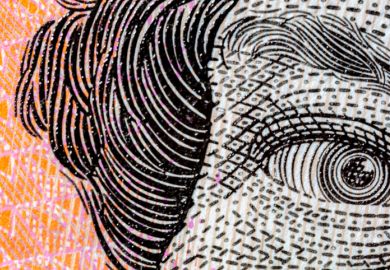Adam B. Jaffe of Brandeis University and Josh Lerner of Harvard Business School are path breakers. Almost uniquely among economists, they have become leading experts on the way that, especially in the US, the incentives of patent law have affected the behaviour of firms seeking patent protection, of judges in patent cases and of patent officials.
In Innovation and its Discontents , Jaffe and Lerner insist that technological advance is the biggest factor influencing innovation and economic growth. Yet focusing on their own country, they see the patent system as "sand rather than lubricant in the wheels of American progress".
In an instructive and highly readable work, the authors examine the lessons to be learnt from the US system and why these should be recognised outside the US.
The central chapters consider the key issues. First, there is a "dark side" to the US system in that private firms seem increasingly eager to "do battle over patent rights", seeing them as offensive rather than defensive weapons. This follows the application of lessons learnt during "a long debate" - spread over 130 years - in which, at least initially, countries such as Holland and Britain played a major role. From this broad review of events, the authors conclude that over time there has been a "cycle" of patent conspiracies where, too often, attempts to improve patent law "have created as many problems as they have solved". As a result, patent policy in the US "is truly the kingdom of unintended consequences".
The authors' prime target is a "silent revolution", where events in the 1980s and 1990s have led to a backlash that has strengthened patent rights while weakening the standards used when granting them. Jaffe and Lerner put much of the blame for this on two changes in the American system since 1980 that, while "seemingly procedural and administrative", have "resulted in the most profound changes in US patent policy since 1836".
First, from 1982, all patent appeals have been heard in one specialised patent appeal court instead of 12 regional courts. Second, from the early 1990s, the US Patent and Trademark Office (PTO) has been funded solely from fees paid by applicants for patents, and it is seeking to become "a kind of service agency". To support their contention that there has been a "slow starvation" of the patent system, Jaffe and Lerner point to two decades of extraordinary pressures from three sources. The US Congress has been unduly eager to see the patent office become "a governmental profit centre".
Congress has also failed to enable the PTO to compete with "skyrocketing private-sector compensation". The PTO itself has made significant management mistakes, not least in information technology.
To support their claim that the PTO has been denied adequate resources, the authors compare its position with that of the European Patent Office.
Europe's patent office has roughly the same number of examiners as the PTO (some 5,000), but it tackles only about half the number of patent applications handled by its US counterpart. Jaffe and Lerner therefore contend that "it is time to recognise that strengthening the legal value of patents while reducing the rigour of patent examination has damaged the system". They call for "a recalibration" of that system, which would have three main goals: improving patent quality, reducing uncertainty and controlling costs. Under their scheme, the authors predict, most patents "will continue to get a relatively cursory review and then be forgotten".
More important patents will be reviewed with more rigour and with fewer mistakes. For the few cases that really matter and that "the PTO still gets wrong, the courts will provide a balanced and reasonably final determination".
This is a book for all who seek to be well informed on a key aspect of the US economy - the role of patents in boosting innovation and prosperity, to which academics have failed to pay adequate attention. Jaffe and Lerner stress that while economists have used US patents as data in measuring, say, the size of knowledge flows by looking at patent citations, "relatively few looked at the working of the patent system itself". They criticise lawyers, arguing that "intellectual property has had a second-class status within law schools".
More broadly, Jaffe and Lerner bemoan the lack of a common language among scholars and practitioners for thinking about patents. Is it a pipe dream to hope for widespread reading of Innovation and its Discontents , which might increase research on practical aspects of patent systems and foster interdisciplinary research and debate between economists and lawyers, helping to create a common language?
Sir Douglas Hague is an honorary fellow of Templeton College, Oxford University, and visiting professor, Manchester Business School.
Innovation and its Discontents: How Our Broken Patent System Is Endangering Innovation and Progress, and What To Do About It
Author - Adam B. Jaffe and Josh Lerner
Publisher - Princeton University Press
Pages - 236
Price - £18.95
ISBN - 0 691 11725 X
Register to continue
Why register?
- Registration is free and only takes a moment
- Once registered, you can read 3 articles a month
- Sign up for our newsletter
Subscribe
Or subscribe for unlimited access to:
- Unlimited access to news, views, insights & reviews
- Digital editions
- Digital access to THE’s university and college rankings analysis
Already registered or a current subscriber? Login



